#tomb of amenhotep
Text

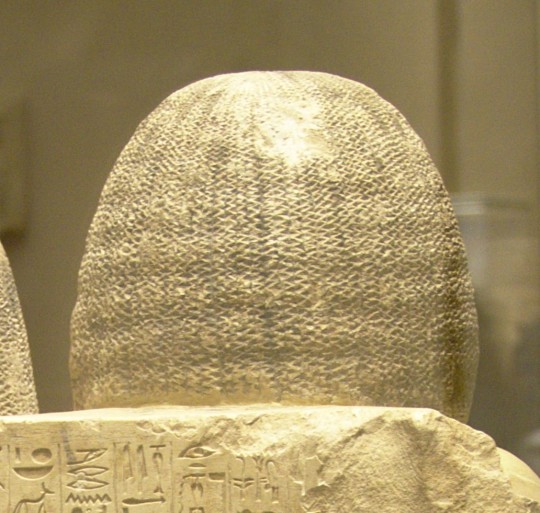
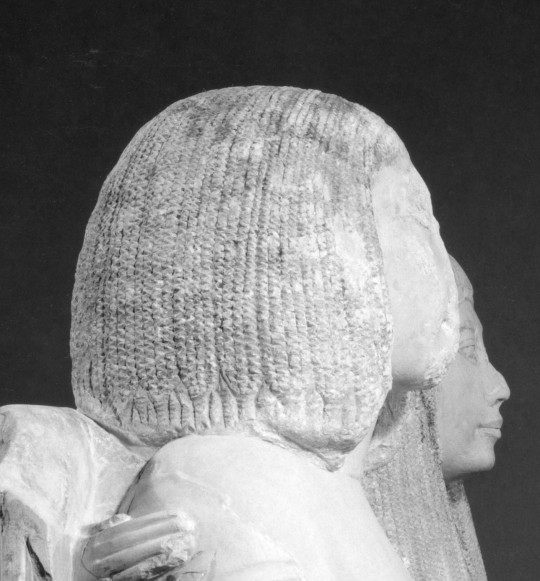

Yuny and His Wife Renenutet - Met Museum Collection
Inventory Number: 15.2.1
New Kingdom, Ramesside, Dynasty 19, ca. 1294–1279 B.C.
Location Information: From Egypt, Middle Egypt, Asyut (Assiut, Siut; Lykopolis), Tomb of Amenhotep, Necropolis Cliff tomb, Medjdeni, Khashaba excavations, 1913
Other Photos:
Jorge Elías @ Flickr | Margaret Lucy Patterson @ Flickr
Description:
These figures represent Yuny seated next to his wife Renenutet. Yuny, who lived in the city of Asyut, was a chief royal scribe and holder of many other offices, perhaps including that of physician.
Additional inscriptions on the base of the statue further elaborate Yuny's responsibilities. On the center fold of Yuny's pleated skirt is an inscription that reads: "May everything that comes forth upon the offering table of [the god] . . . and all pure food that comes forth from the Great Enclosure [the temple complex at Heliopolis] be for the chief scribe, royal scribe of letters, Yuny, justified."
Appropriate to their high secular and religious positions, Yuny and Renenutet wear the elaborate wigs and fine linen attire fashionable in their time. Renenutet is adorned with a lotus fillet and a necklace called a broad collar. The beads are in the shape of nefer hieroglyphs (meaning "good" or "beautiful"), offering vases, and floral petals. Traces of black remain on the wigs. The couple sit together on a bench with elegantly carved lion-paw feet.
#Yuny and His Wife Renenutet#new kingdom#ramesside#dynasty 19#middle egypt#upper egypt#asyut#assiut siut#lykopolis#tomb of amenhotep#met museum#15.2.1#mens hair and wigs#NKRMHW
0 notes
Text
Amenhotep III the Magnificent announced his marriage in a series of commemorative scarabs, the same shape as the well-known beetle amulets, which modern tourists have carried away from Egypt by the thousands, but large enough to contain a short inscription on the flattened base. This inscription read:
May he live, Amenhotep III, given life, and the King’s Great Wife Tiye, who lives. The name of her father is Yuya, the name of her mother is Thuya; she is the wife of a mighty king whose southern boundary is as far as Karoy, and northern as far as Naharin!
This announcement can be interpreted in a number of ways, but to me it sounds like a challenge. Tiye was not a king’s daughter. The tomb of her parents was found in 1905. It had been entered in ancient times, the coffins opened and some of the grave goods stolen. A lot was left, though, and the exposed mummies were in excellent condition. Tiye’s father, Yuya, was a fine-looking man; suggestions that was non-Egyptian, of Asiatic or Nubian origin, have no actual basis in fact. Yuya’s titles are not indicative of high rank. He is called “Master of the Horse,” and parts of a model chariot found in the tomb bear out this role. His wife had the usual titles of a court lady, in addition to being designated “Mother of the King’s Chief Wife.”
-Temples, Tombs, and Hieroglyphics by Barbara Mertz
#barbara mertz#amenhotep iii#scarabs#tiye#queen tiyi#yuya and thuya#ancient egypt#archaeology#temples tombs and hieroglyphs
18 notes
·
View notes
Text
Amenhotep-Huy's name may not be known to many today, but in Egypt’s 18th Dynasty the vizier was so revered for opposing Akhenaten's controversial move to #monotheism that high-ranking officials built a #necropolis around his #tomb.
32 notes
·
View notes
Text

Chair of Princess Sitamun
New Kingdom, 18th Dynasty, ca. 1391-1353 BC.
Antiquities Service Excavations on Behalf of Theodore M. Davis (1905).
From the Tomb of Yuya and Tjuyu (KV46), Valley of the Kings, Thebes.
Now in the Egyptian Museum, Cairo. JE 5342; CG
The wooden throne of Princess Sitamun is an example of the subtlety and elegance of Egyptian woodwork in the 18th Dynasty. The throne is made from red wood, covered in parts by a 4 mm thick veneer of red wood.
The legs are shaped like lion’s paws. These paws sit atop high bases which are divided by ridges. The legs were originally covered in silver plate – some remains of which survive.
Sitamun is usually thought to have been the daughter-wife of Amenhotep III. She is said to be the daughter of Amenhotep III and Queen Tiye in some inscriptions. Some have speculated that Sitamun was actually the daughter of Thutmose IV and Queen Iaret, but there does not seem to be any firm evidence for this.
Photo: Kenneth Garrett
Read more
237 notes
·
View notes
Text
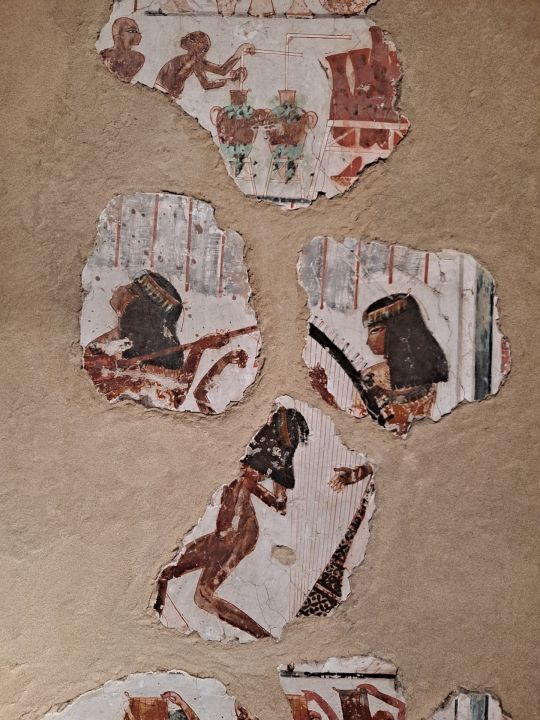
Fragments of a wall painting from a tomb chape
* Thebes
* 18th dynasty, reign of Amenhotep III (1390-1353 BCE)
* clay, straw, stucco
* Egyptian Museum of Turin
Turin, June 2023
#Egypt#14th century BCE#ancient#art#wall painting#stucco#music#hairstyle#Turin Egyptian Museum#my photo#§
305 notes
·
View notes
Photo
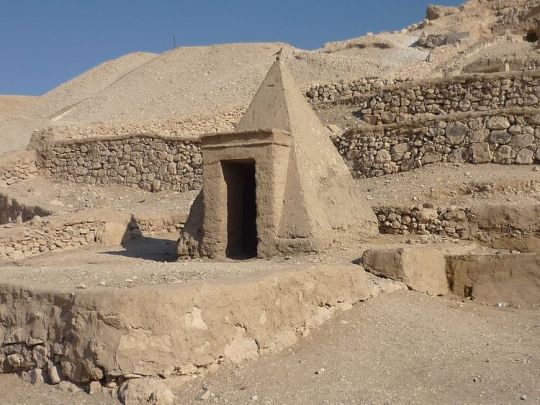
Deir el-Medina
Deir el-Medina is the modern Arabic name for the worker's village (now an archaeological site) which was home to the artisans and craftsmen of Thebes who built and decorated the royal tombs in the nearby Valley of the Kings and Valley of the Queens.
The ancient inhabitants called the village Pa Demi (“the village”) but it was referred to in official correspondence as Set-Ma'at (“The Place of Truth”) because the workers there were thought to be inspired by the gods in creating the eternal homes of the deceased kings and their families. Early in the Christian era the village, then deserted, was occupied by monks who took over the Temple of Hathor for use as a cloister. The temple was referred to as Deir el-Medina (“Monastery of the Town”) and this name finally came to be applied to the entire site.
Unlike most villages in ancient Egypt, which grew up organically from small settlements, Deir el-Medina was a planned community. It was founded by Amenhotep I (c.1541-1520 BCE) specifically to house workers on royal tombs because tomb desecration and robbery had become a serious concern by his time. It was decided that the royalty of Egypt would no longer advertise their final resting places with large monuments but, instead, would be buried in a less accessible area in tombs cut into the cliff walls. These areas would become the necropolises now known as the Valley of the Kings and the Valley of the Queens and those who lived in the village were known as “Servants in the Place of Truth” for their important role in creating eternal homes and also remaining discreet regarding tomb contents and location.
Deir el-Medina is among the most important archaeological sites in Egypt because of the wealth of information it provides on the daily life of the people who lived there. Serious excavation at the site was begun in 1905 CE by the Italian archaeologist Ernesto Schiaparelli and furthered by a number of others throughout the 20th century CE with some of the most extensive work done by French archaeologist Bernard Bruyere between 1922-1940 CE. At the same time Howard Carter was bringing the treasures of the royalty to light from Tutankhamun's tomb, Bruyere was uncovering the lives of the working people who would have created that final resting place.
History of the Village
The earliest extant ruins at the site are from the reign of Thutmose I (1520-1492 BCE), son and successor of Amenhotep I, but there is no doubt that it was Amenhotep I who first planned the site. He and his mother, Ahmose-Nefertari, were worshipped as protective gods at the site throughout its history. The workers also venerated the cobra goddess Meretseger (whose name means “She Who Loves Silence”), the personification of the Theban necropolis and protector of the dead and, especially, of their tombs.
By the time of the New Kingdom (c.1570-c.1069 BCE) tomb robbing had become almost epidemic in scope. Although measures such as false doors and labyrinths had been a part of tomb building since the Old Kingdom (c.2613-2181 BCE) they were not effective in keeping robbers from reaching the burial chamber and the vast treasures left there with the deceased. One gains an understanding of exactly how great the wealth in these tombs was when one considers the treasures of Tutankhamun's tomb discovered by Howard Carter in 1922 CE. Tutankhamun died before he was 20 years old and had not yet amassed the kind of wealth a king like Djoser (c.2670 BCE) or Khufu (2589-2566 BCE) would have had entombed for the afterlife.
The Valley of the Kings was selected as the new necropolis for royalty and the village was planned for easy access (a half hour's walk) from a worker's home to the tombs. The village was in continuous use from the time of Thutmose I until the collapse of the New Kingdom in c. 1069 BCE. Although the community and nearby necropolises were planned to safeguard the tombs of the kings, human greed and opportunity would eventually work to undermine the plan and some of the workers themselves would turn to robbing the tombs they had helped build and protect for an easy and quite substantial payoff. For most of its history, however, the village seems to have functioned as it was intended.
Continue reading...
148 notes
·
View notes
Text

Coffin of Ahmose-Meritamun
The Outer coffin of Queen Ahmose-Meritamun, made of cedarwood, from the Tomb of Queen Ahmose-Meritamun (TT358) at Deir el-Bahari, West Thebes. She was both the sister and the wife of pharaoh Amenhotep I.
New Kingdom, early 18th Dynasty, reign of Amenhotep I, ca. 1525-1504 BC.
Now in the Egyptian Museum, Cairo. JE 53140
https://egypt-museum.com/mummy-of-queen-ahmose-meritamun/
307 notes
·
View notes
Text

Ancient Egyptian faience amulet in the form of a cartouche of Nebmaatre, throne name of Amenhotep III "the Great" (r. ca. 1390-1352 BCE). Found in Amenhotep's tomb (WV 22) in the Valley of the Kings; now in the Metropolitan Museum of Art.
#art#art history#ancient art#Egypt#Ancient Egypt#Egyptian art#Ancient Egyptian art#18th Dynasty#New Kingdom#Amenhotep III#Nebmaatre#jewelry#jewellery#amulet#faience#cartouche#hieroglyphics#Metropolitan Museum of Art
555 notes
·
View notes
Text
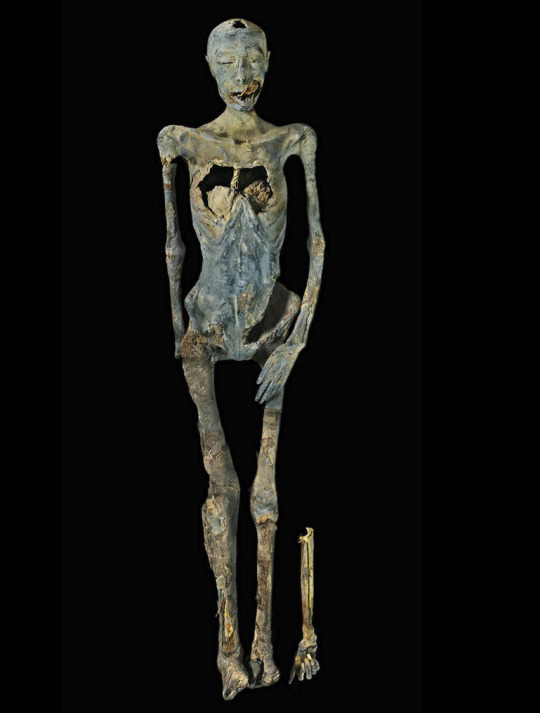
Tutankhamun’s mother (The Younger Lady) 18th Dynasty (1550/1549 to 1292 BC.)
The mummy known as “The Younger Lady”, formally identified as the mother of king Tutankhamun and full biological sister of the mummy known as KV55 (believed by some scholars to be that of Akhenaten but not officially certified). “The Younger Lady”, is a daughter of king Amenhotep III and his Great Royal Wife, Tiye.
“The Younger Lady”, was found in tomb KV35 by archaeologist Victor Loret in 1898. She was laid out beside the mummy of her mother (Tiye) and the mummy of a young boy, possibly the young Prince Thutmose, a son of Amenhotep III and his Great Royal Wife Tiye. For a long while the mummy of Great Royal Wife Tiye simply went by “The Elder Lady”, until officially identified by a lock of hair buried within Tutankhamun’s tomb, labelled as the hair of his grandmother. This hair was a definite match for the natural hair upon Tiye’s mummy.
Various scholars and Egyptology lovers have theories of the identity of “The Younger Lady”, identifying her as a secondary wife of Akhenaten, Kiya, and some even propose she is Nefertiti herself, however…these are simply theories. As of yet “The Younger Lady” has not been formally identified, other than her biological relation to the mummies of her mother (Tiye), father (Amenhotep III), brother (KV55) and son (Tutankhamun).
126 notes
·
View notes
Text



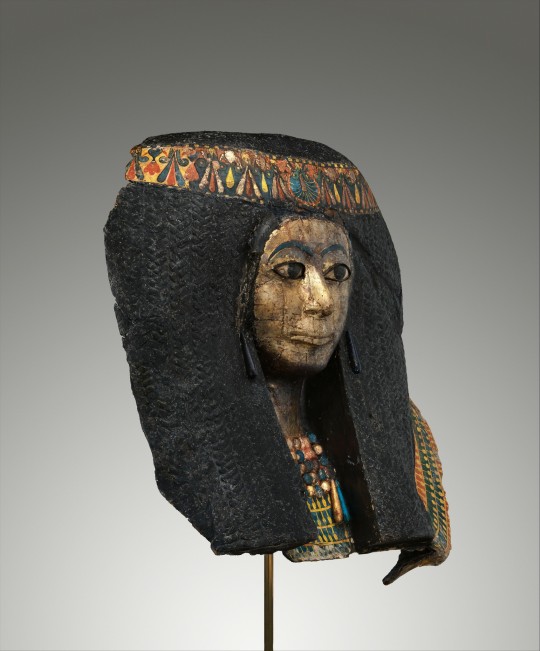
~ Funerary Mask of a Woman.
Period: New Kingdom, 18th Dynasty; Reigns of Amenhotep II–Thutmose IV
Date: ca. 1427 B.C.–1390 B.C.
Place of origin: Egypt, Thebes; Probably from Dra Abu el-Naga, Tomb of Amenhotep
Medium: Cartonnage, gesso, paint, gold, copper alloy, faience.
#ancient#ancient art#history#museum#archeology#ancient egypt#ancient sculpture#ancient history#archaeology#egyptian#egypt#egyptology#funerary mask of a woman#mask#new kingdom#18th dynasty#amenhotep ii#Thutmose IV#ca. 1427 b.c.#ca. 1390 b.c.#Thebes#funerary art
578 notes
·
View notes
Text

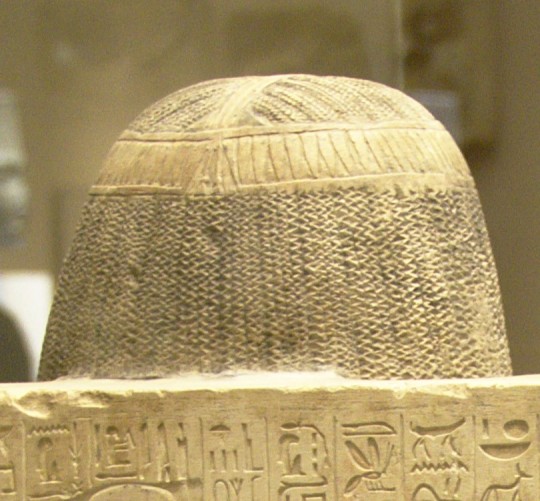

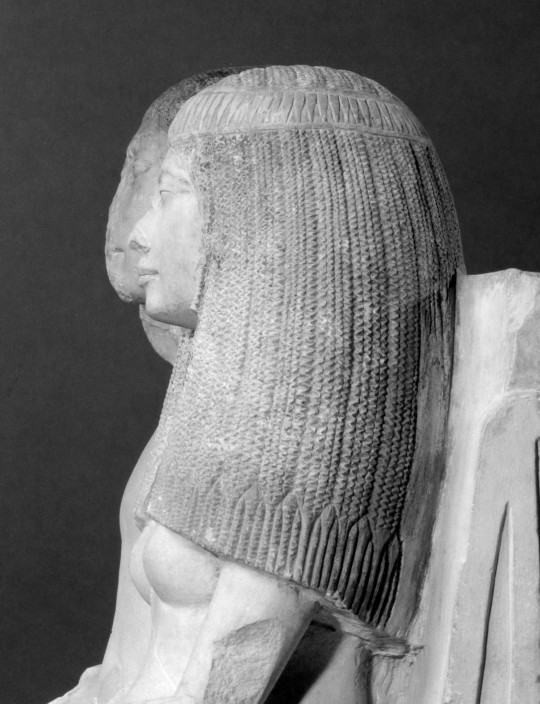
Yuny and His Wife Renenutet - Met Museum Collection
Inventory Number: 15.2.1
New Kingdom, Ramesside, Dynasty 19, ca. 1294–1279 B.C.
Location Information: From Egypt, Middle Egypt, Asyut (Assiut, Siut; Lykopolis), Tomb of Amenhotep, Necropolis Cliff tomb, Medjdeni, Khashaba excavations, 1913
Other Photos:
Bruce Batten on @ Flickr | Margaret Lucy Patterson @ Flickr
Description:
These figures represent Yuny seated next to his wife Renenutet. Yuny, who lived in the city of Asyut, was a chief royal scribe and holder of many other offices, perhaps including that of physician.
Renenutet affectionately places her right arm around her husband's shoulders. On the back of the statue she is described as a singer of Amun-Re. In her left hand, she holds by its metal counterweight a heavy bead necklace called a menat. Menat necklaces were ritual implements that were held in the hands and shaken like cymbals, especially in the service of the goddess Hathor, but also when entering the presence of other deities..
Appropriate to their high secular and religious positions, Yuny and Renenutet wear the elaborate wigs and fine linen attire fashionable in their time. Renenutet is adorned with a lotus fillet and a necklace called a broad collar. The beads are in the shape of nefer hieroglyphs (meaning "good" or "beautiful"), offering vases, and floral petals. Traces of black remain on the wigs. The couple sit together on a bench with elegantly carved lion-paw feet.
#Yuny and His Wife Renenutet#new kingdom#ramesside#dynasty 19#middle egypt#upper egypt#asyut#assiut siut#lykopolis#tomb of amenhotep#met museum#15.2.1#womens hair and wigs#NKRWHW
0 notes
Photo

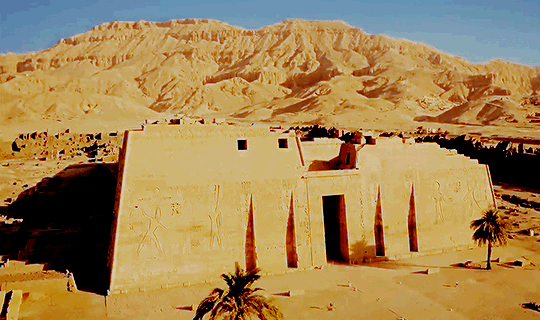
“The Arabic name Medinet Habu (“City of Habu”) was thought to reflect the site's more ancient connection with Amenhotep, the son of Hapu, a respected sage of the 14th century BCE, later deified, whose memorial temple was immediately to the north. No trace of this association has come down from ancient times, however, as the site's formal name in Egyptian was either Djeme, “Males and Mothers”— originally with reference to the eight primeval deities, or Ogdoad, whom the ancients believed to be buried there — although the name continued to be used by the site's later Christian inhabitants.
Medinet Habu's most conspicuous standing monument is the great memorial temple of Ramesses III (reign 1198–1166 BCE). On the grounds of this complex, however, are numerous other structures, most notably the so-called small temple (built in stages, from the mid 18th Dynasty until the second century CE) and the memorial chapels of the divine votaresses of Amun (25th Dynasty and 26th).
Among other ancient buildings at the site, but less well preserved, is the memorial temple of King Horemheb (reign 1343–1315 BCE), usurped from his predecessor Ay (reign 1346–1343 BCE), which abuts Ramesses III's enclosure on its northern side. To its east are a number of tomb chapels made for high officials of the later New Kingdom.
Most abundantly on the enclosure wall of Ramesses III's temple are the remnants of later mud-brick houses — from the town that engulfed the site beginning in the 11th century BCE until the site was abandoned in the 9th century CE. Reuse of Ramesses III's temple was made especially apparent by the decorated doorways that were cut into its northern outer wall during early Christian times, when the Holy Church of Djeme occupied the building's second court.
The great temple of Ramesses III was called the Mansion of Millions of Years of King Usermare-Maiamun; ‘United with Eternity in the Estate of Amun on the West of Thebes.’ The precinct, 210m × 315m, was entered by two stone gates in the mud-brick enclosure wall, on the eastern and the western sides. The western gate — presumably the normal entrance for employees who lived outside the precinct — was destroyed when the temple was besieged in a civil war, during the reign of Ramesses XI (c. 1096 BCE). The eastern entrance, approached by a canal, terminated in a harbour, from which important visitors and statues could enter the temple.”
SOURCE: William J. Murnane, The Oxford Encyclopedia of Ancient Egypt (2001)
#egypt#ancient egypt#egyptology#archaeology#historyedit#mine#my edit#medinet habu#20th dynasty#new kingdom#thebes#waset#luxor#ramesses iii
176 notes
·
View notes
Text
Amenhotep-Huy's name may not be known to many today, but in Egypt’s 18th Dynasty the vizier was so revered for opposing Akhenaten's controversial move to #monotheism that high-ranking officials built a #necropolis around his #tomb.
17 notes
·
View notes
Text

Mummy of Amenhotep III
Originally buried in WV22 (Valley of the Kings), Amenhotep III's mummy was moved in ancient times to Tomb KV35, the tomb of Amenhotep II, which was used by Egyptian priests around the Third Intermediate Period as a royal "mummy" cache (storage). Tomb KV35 became a haven to protect the deceased, with priests placing royal mummies from throughout varied reigns together in one space to prevent more damage and theft from ancient tomb robberies.
Despite the rather poorly preserved condition of Amenhotep III's mummy (only his head is pictured here, but his mummified body does exist alongside his head), modern analysis of the king's remains tell us he died around aged 50, which matches Grafton Elliot Smith's estimation from over a century ago; that Amenhotep III's age at death was likely 40–50 years.
Amenhotep III now rests in the National Museum of Egyptian Civilization after being moved from the Egyptian Museum, Cairo, in April 2021.
Photo: Kenneth Garrett
Read more
180 notes
·
View notes
Text



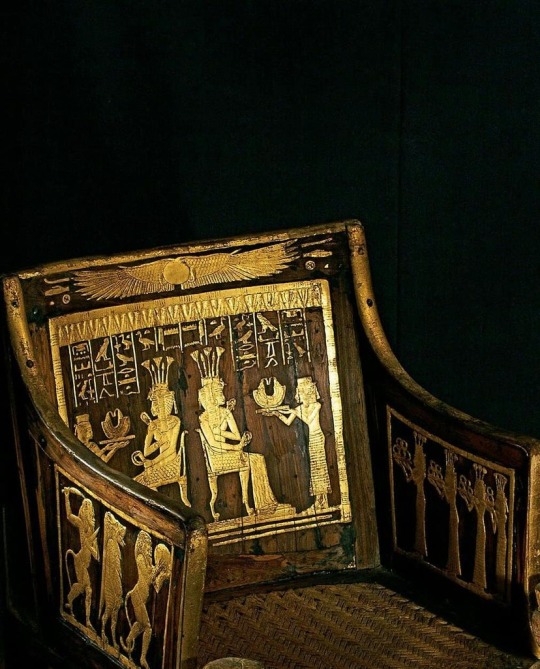

This beautiful chair was found in the Valley of the Kings, in the tomb of Yuya and Tuya, a noble couple from the 18th dynasty, parents of Queen Tiy, Great Royal Wife of Amenhotep III and grandparents of Akhenaten.
246 notes
·
View notes
Text
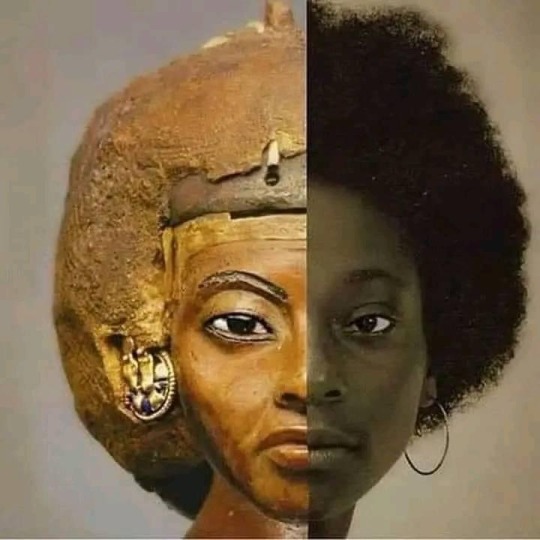
BLACK QUEEN OF #EGYPT NOT ARAB INVADERS 🇪🇬 Tiye (c. 1398 BC – 1338 BC, also spelled Tye, Taia, Tiy and Tiyi) was the Great Royal Wife of the Egyptian pharaoh Amenhotep III, mother of pharaoh Akhenaten and grandmother of pharaoh Tutankhamun; her parents were Yuya and Thuya. In 2010, DNA analysis confirmed her as the mummy known as "The Elder Lady" found in the tomb of Amenhotep II (KV35) in 1898.
15 notes
·
View notes